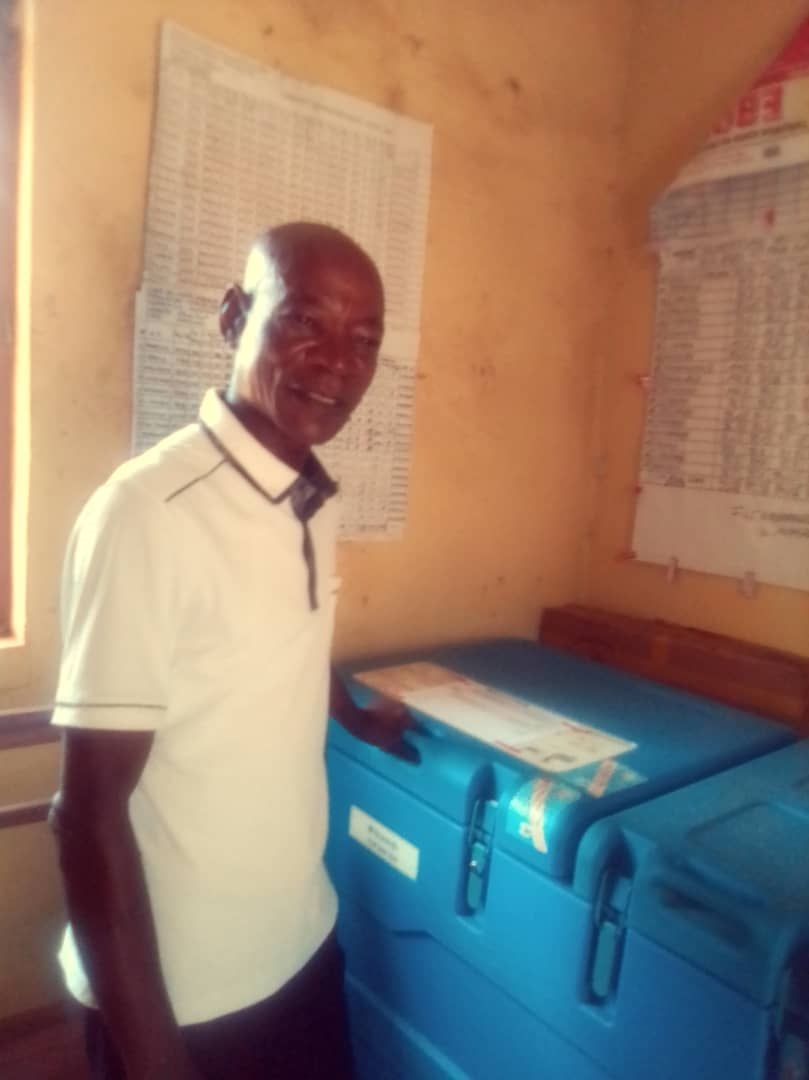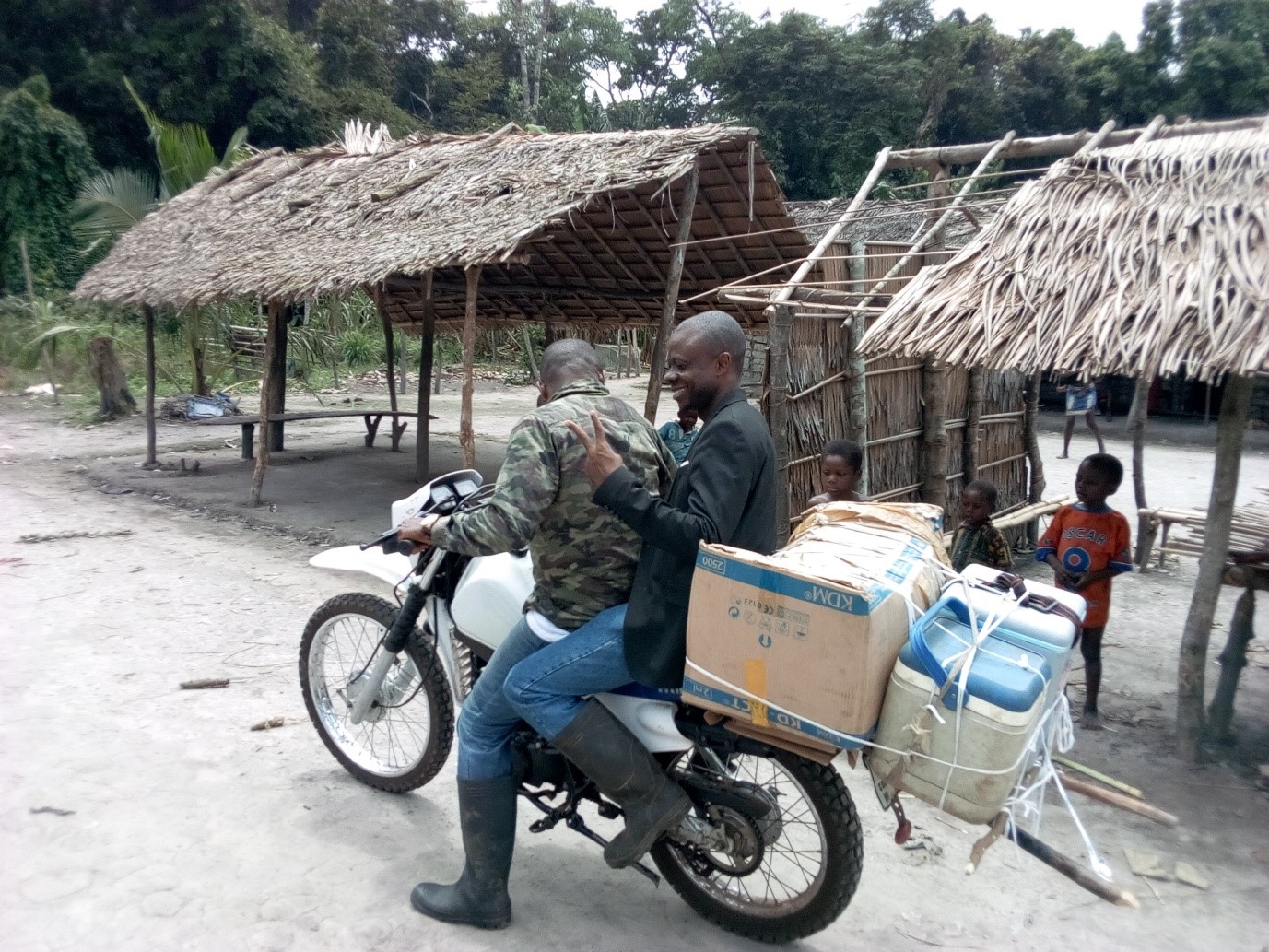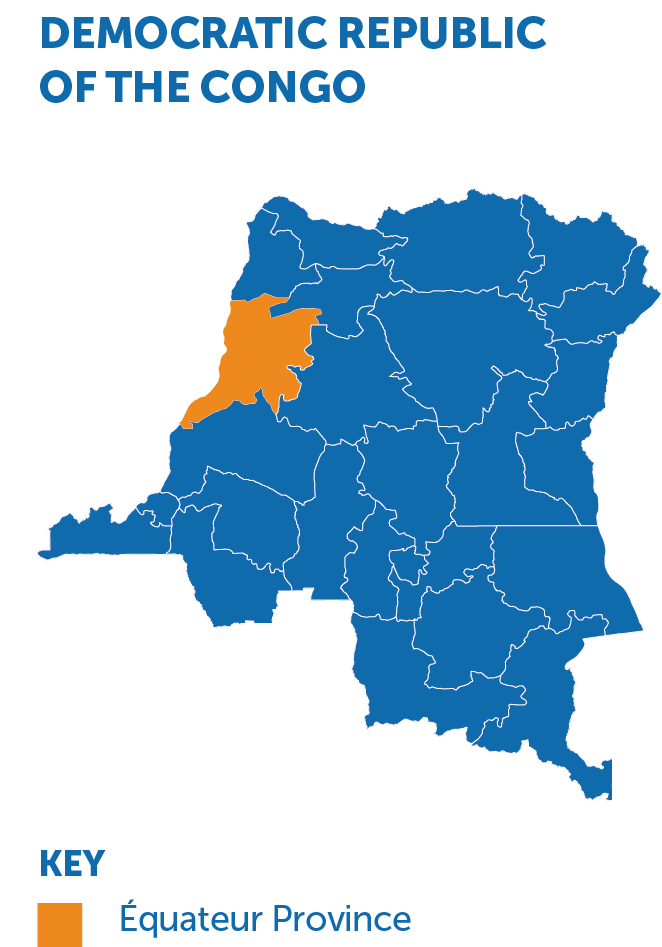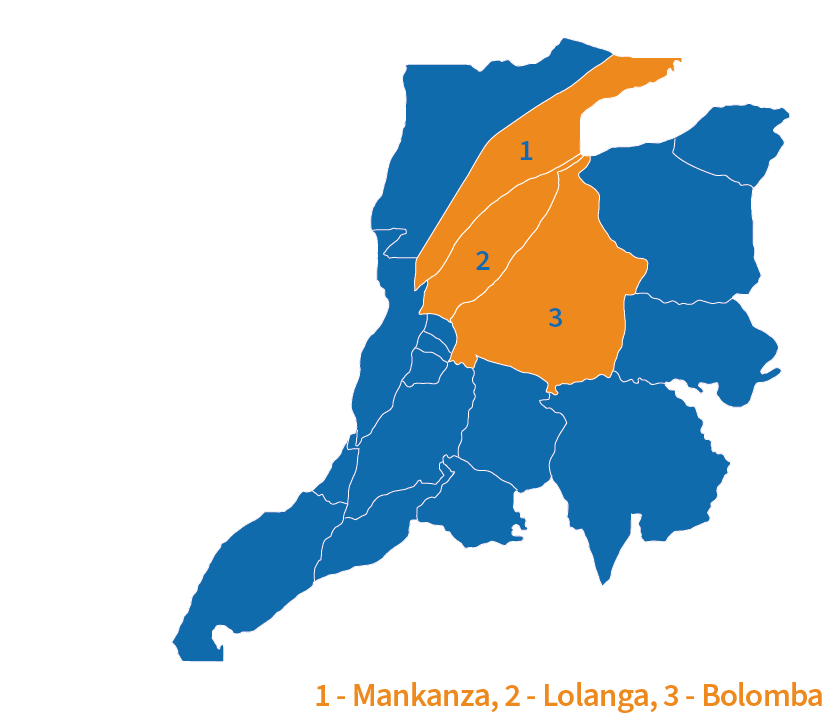Streamlining the River Reliant Supply Chain
Cutting through the Équateur province is the Congo River. The benefits of this waterbody to the surrounding population are endless, but for health workers working within the province, it presents accessibility challenges that has contributed to vaccine stockouts in area health centers/facilities.
Once a month, the resident health care worker begins the long journey to the district office to restock vaccines. Given the need to preserve vaccines under refrigeration, transportation could not take place under the same conditions as other health products, necessitating specific trips for the antigens. As many facilities in the region are staffed by a single health care worker, this would mean service provision would be interrupted, in some cases, during the restocking period. The journey, which sometimes took several days to complete, begins with a boat ride, followed by a motorcycle ride and in some cases, a walk of several miles thereafter. Here they would find Guy Likoma Bakandi, the EPI Nurse Supervisor of the Makanza District, waiting to oversee the collection of vaccines.

Even deciding how many vaccines to supply to one health area was an arduous task for Guy, who had to sift through pages of information received from the health area. The aggregated data only showed coverage of vaccines administered, which made it dicult to monitor the balance of supply versus demand for each health center. Working with an estimated figure, Guy would provide each health worker with vaccines before sending them on their way. These combined factors led to frequent stockouts at health centers, leaving thousands of children susceptible to vaccine-preventable illnesses. After years of working under this ineffective supply chain system, change came about in March 2017 when the Ministry of Health, supported by VillageReach, sought to streamline operations by implementing a last mile delivery system.

The Next Generation Supply Chain Initiative, known as Nouvelle Génération des Chaînes d’Approvisionnement (NGCA), was created with the intention of delivering health care products to facilities that are as close to the population as possible.
The distribution system in Équateur Province has completely been revolutionized through the NGCA initiative, which introduced a vaccine push system. Now, EPI supervisors like Guy carefully monitor and plan for the consolidation of vaccine supply and delivery to health centers. The products are initially stored at the Mbandaka provincial warehouse, which is at the highest tier within the provincial supply chain. The next tier in the supply chain would ordinarily be health zone office, followed by health facilities with cold chain equipment and finally those health facilities that lack these appliances. But through the last mile delivery system, the vaccines are transported together with family planning products and essential medicines directly to health facilities with cold chain equipment.
With each delivery, comprehensive data are collected from every health facility on product use and demand. This enables the calculation of the exact quantity needed by each facility. Implementation of NGCA within the three health zones was completed in February 2018, bringing tangible change to the province such as support offered to health staff when it comes to data management. Supervisory visits from provincial logisticians to area health centers ensure that there is accurate and regular stock reporting as well as proper storage and handling. On-site training on inventory control is also offered to ensure the supply chain is working at an optimum.

Stockouts in Mankanza, Lolanga-Mampoko and Bolomba are now a thing of the past, with all three health zones recording zero incidents since the rollout of the initiative. With proper documentation of vaccine
procurement, the delivery of health care products has been reduced from once a month to once every two months. This, coupled with the merging of product shipments, has reduced the transportation cost by 40 percent at the zonal and service delivery levels. The cost-effectiveness of the supply chain has improved drastically, but so has the population’s access to immunization services.

Now that health workers no longer cover long distances to restock their vaccine stores, the average monthly consumption of vaccine doses in the three health zones has increased by 22 percent, according to a
recent study. In addition, services are no longer interrupted by long absences as health workers address stockouts. With health centers now equipped with the required products, the improvement in service delivery in Équateur Province can be felt by health care providers and recipients alike.

Mariah Kunz
This Bright Spot story was nominated by Mariah Kunz with VillageReach who believes that the supply chain design ideals that were implemented in Équateur could provide insights for others who live in areas with limited numbers of health care workers who are relied on for a variety of needs including vaccine transportation


